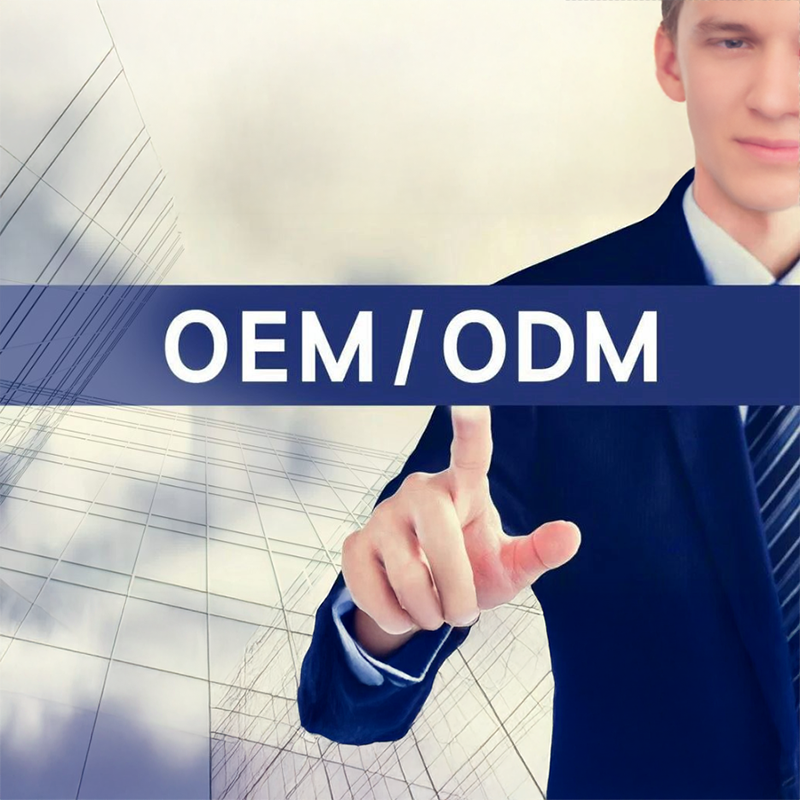What Do OEM and ODM Mean? Key Differences & How to choose?

What Do OEM and ODM Mean? Key Differences Explained
What Does OEM Stand For?
OEM stands for Original Equipment Manufacturer. In this model, you—the buyer—are responsible for product design and specifications. The factory produces the product based on your detailed instructions, often including custom molds, materials, and branding.
Key Characteristics of OEM:
You provide the product design, CAD files, or engineering drawings.
The factory manufactures the product according to your specifications.
Your brand is placed on the final product.
You retain control over intellectual property and customization.
Example:
You design a stainless steel water bottle with a unique shape and logo. You hire a factory to produce it exactly to your design—this is an OEM arrangement.
OEM is suitable for:
Businesses with their own R&D or product development team
Brands focused on long-term uniqueness and IP ownership
Companies aiming to launch a proprietary product line
What Does ODM Stand For?
ODM stands for Original Design Manufacturer. In this case, the factory already has a ready-made product design, and you simply rebrand or make minor adjustments to sell it under your own brand.
Key Characteristics of ODM:
The factory owns the original product design.
You may customize aspects like color, packaging, or small features.
Faster production and lower upfront investment.
Limited product uniqueness unless further customized.
Example:
You find a wireless Bluetooth earbud design from a supplier. You change the color and packaging, and sell it with your own brand—this is ODM.
ODM is suitable for:
Startups or small brands testing new markets
Companies that want to launch quickly with minimal R&D
Sellers seeking lower product development costs
Here’s a simplified explanation of OEM vs. ODM:
-
-
-
-
OEM (Original Equipment Manufacturer):
-
You Design: You create the product specs, blueprints, and branding.
-
They Build: A factory manufactures it exactly to your design.
-
You Own: You keep full control and ownership of the design (IP).
-
Best For: Unique products, strong branding, long-term control. Requires more time and upfront money (design, molds, testing).
-
Example: Designing a custom-shaped water bottle with your logo and having a factory make it.
-
-
ODM (Original Design Manufacturer):
-
They Design: The factory already has a pre-designed product.
-
You Customize (Optionally): You might change colors, packaging, or add your logo.
-
They Own (Usually): The factory typically owns the core design (IP).
-
Best For: Launching quickly, testing markets, lower budgets. Less unique, harder to build strong brand identity.
-
Example: Choosing an existing wireless earbud design, changing its color, putting your brand on it, and selling it.
-
-
-
-
| Key Differences: | ||
| Feature | OEM | ODM |
| Design | You create it | Factory provides it |
| Control | High (Full specs & branding) | Lower (Limited customization) |
| Cost | Higher upfront | Lower upfront |
| Time | Longer (Design & setup) | Faster (Ready to customize) |
| Uniqueness | High (Your unique product) | Low/Moderate (Shared design) |
| IP Ownership | You own it | Factory usually owns it |
Pros and Cons of OEM: Is It Right for Your Business?
Advantages
Full control over product design and branding
Strong IP protection and exclusivity
Supports long-term brand development and market positioning
Disadvantages
Higher development costs (design, molds, certifications)
Longer lead times before mass production
Requires technical input or experienced product teams
Pros and Cons of ODM: Is It Right for Your Business?
Advantages
Fast to market—great for testing new ideas
Lower startup and design costs
Factories often have proven production experience
Disadvantages
Less product uniqueness (others may sell similar products)
Lower IP ownership or exclusivity
Harder to build a strong brand identity with generic products
How to Choose Between OEM and ODM for Your Product
Making the right decision comes down to your business model, goals, and resources.
Choose OEM if:
You have a unique product idea or patented design
You want long-term control and brand differentiation
You’re ready to invest in development and tooling
Choose ODM if:
You want to launch quickly and test the market
You have a limited budget or limited technical capacity
You prefer a lightweight operation with fewer upfront risks
FAQ: OEM and ODM Explained
Q1: Can one factory offer both OEM and ODM services?
Yes. Many factories in China provide both OEM and ODM options depending on the buyer’s requirements. A good sourcing agent can help you assess which model fits your situation.
Q2: Is OEM more expensive than ODM?
Typically, yes. OEM involves upfront investment in design, molds, and testing. However, it delivers long-term value through product uniqueness and IP protection.
Q3: Do I need a sourcing agent for OEM/ODM?
While not mandatory, it’s highly recommended. A sourcing agent ensures you choose reliable suppliers, manage timelines, avoid communication issues, and handle logistics efficiently.
Q4: Can I start with ODM and move to OEM later?
Absolutely. Many brands begin with ODM to test the market and transition to OEM once they validate product demand and are ready to invest in full customization.
Q5: Which is cheaper—OEM or ODM?
ODM is generally cheaper because the manufacturer already has the product design and tooling in place. OEM costs more upfront but gives you greater control and long-term value.
Q6: Who owns the intellectual property (IP) in OEM/ODM?
In OEM, the buyer typically owns the IP. In ODM, the factory usually owns the design unless you negotiate otherwise (always confirm in writing).
Q7: Are there hybrid models between OEM and ODM?
Yes. Some manufacturers offer “semi-OEM” or customized ODM, where you can modify features like color, logo, and packaging without doing a full redesign.
If you have any further questions about OEM or ODM—or need help deciding which model is right for you—feel free to contacy us. We’d be happy to assist!
